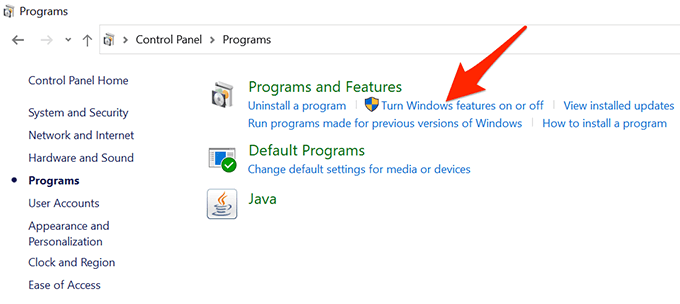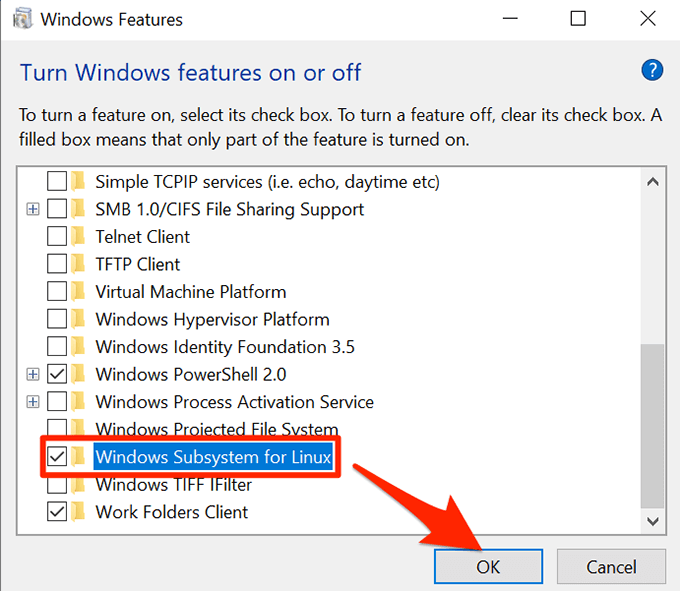

- Linux bash shell for windows update#
- Linux bash shell for windows full#
- Linux bash shell for windows windows 10#
- Linux bash shell for windows android#
- Linux bash shell for windows software#
It now supports other Linux distributions, too. While this feature was originally called “Bash on Ubuntu on Windows,” it also allows you to run Zsh and other command-line shells. The Bash shell you’ll get is really just all those GNU utilities and other software.
Linux bash shell for windows software#
Free software purists often argue the average Linux operating system should be called “GNU/Linux” because it’s really a lot of GNU software running on the Linux kernel. Instead, this allows you to run the Bash shell and the exact same binaries you’d normally run on Ubuntu Linux. Linux is the underlying operating system kernel, and that isn’t available here.
Linux bash shell for windows full#
Microsoft worked with Canonical to offer a full Ubuntu-based Bash shell environment that runs atop this subsystem. While Wine allows you to run Windows applications directly on Linux, the Windows Subsystem for Linux allows you to run Linux applications directly on Windows.
Linux bash shell for windows android#
It’s based on Microsoft’s abandoned Project Astoria work for running Android apps on Windows.
Linux bash shell for windows windows 10#
Instead, Windows 10 offers a full Windows Subsystem intended for Linux for running Linux software.

This isn’t a virtual machine, a container, or Linux software compiled for Windows (like Cygwin).

RELATED: Everything You Can Do With Windows 10's New Bash Shell uname :įor example, uname -a outputs the OS, the hostname, the kernel version and the architecture.What You Need to Know About Windows 10’s Bash Shell
Linux bash shell for windows update#
Many cmdlets have built-in parameters which allows to filter the objects, but the generic filtering mechanism is the cmdlet Where-Object.įor example, to filter the processes which have a working set of more than 100 MB, you would run the following :Ĭ:\ > Select-String -Path 'C:\Windows\iis.log' -Pattern 'Failed' Windows\iis.log:11: Failed to create iisCngConfigurationKey key container ( result = 0 x8009000f ) Windows \iis.log:21: Failed to create iisCngWasKey key container ( result = 0 x8009000f ) Windows \iis.log:76: Failed to create iisCngConfigurationKey key container ( result = 0 x8009000f ) Windows \iis.log:80: Failed to create iisCngWasKey key container ( result = 0 x8009000f ) Windows \iis.log:679: Failed to update the DynamicIPRestrictionModule globalModule ( ignoring failure ) ( result = 0 x80070490 )Īnd if you are a regular expression nerd, you can feed them to the Pattern parameter. No text-parsing required here, unless you are dealing with objects of the type. In Powershell, most of the time we are dealing with objects so this translates to : filtering the objects which have 1 or more value(s) in a property. Think about what you are trying to achieve when you use grep : filtering lines of text which contain a specific value, string, or pattern. This is the one I get asked about the most : For this, there is the Wait parameter, which was introduced in PowerShell 3.0 as well. This parameter was introduced with PowerShell 3.0.Īn exceedingly valuable usage of the tail command for troubleshooting is tail -f to display any new lines of a log file as they are written to the file. The Tail parameter has an alias : Last, this makes this parameter more discoverable for those who Tail would not even cross their mind because they don’t have a Linux background. We can use its aliases : cat, gc or type. Note that even when we run this cmdlet against a text file, this doesn’t output plain text, this outputs one object of the type for each line in the file. So, in the example above, $_ stores the value 1, then it stores the value 2, then the value 3 and finally the value 4. In case you are wondering what is the $_ in the example above, it is a representation of the object currently being processed, which was passed from the pipeline. pwd :Ĭ:\ > 1.4 | ForEach-Object once for every object passed to it via the pipeline. Besides, this is an opportunity to illustrate fundamental differences between bash and PowerShell. Still, I’m going to do this translation exercise for a few basic commands because it can be an interesting learning exercise for bash users coming to PowerShell. Powershell gives us rich objects with properties and methods to easily extract the information we need and/or to manipulate them in all sorts of ways. So quite often, translating the bash way of doing things to PowerShell is the bad way of doing things. When we run PowerShell cmdlets we get objects. When we run bash commands or external executables in bash, we get plain text. So their cat and their grep are near and dear to their heart and their first reflex when they get into PowerShell is to replicate these commands.įirst, this is not always a good approach because bash and PowerShell are fundamentally different.

The majority of my colleagues have more of a Linux background than Windows. PowerShell equivalents for common Linux/bash commands


 0 kommentar(er)
0 kommentar(er)
